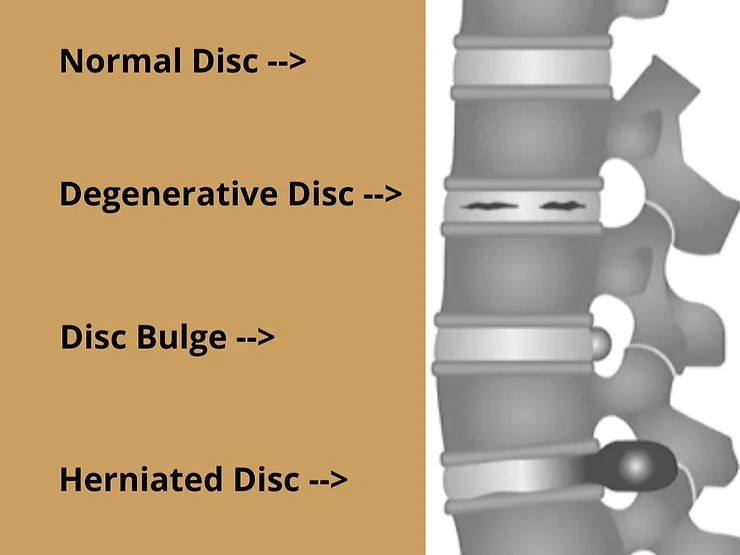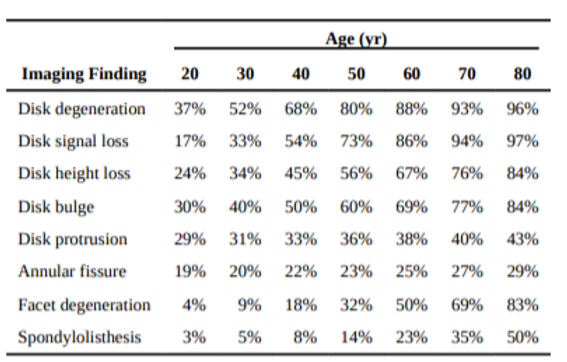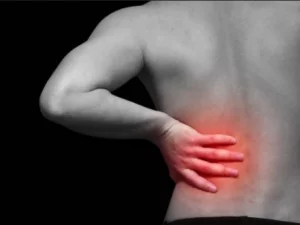“The human body is the most complex system ever created. The more we learn about it, the more appreciation we have about what a rich system it is.” – Bill Gates
One of the most common things I run into in the clinic are patients with low back pain and sciatica is reporting they have been informed they have a herniated or bulged disc.
What exactly are herniated or bulged discs? This is when a portion of the soft center of a rubbery disc (the nucleus) between the spinal vertebrae gets pressured through a portion of the sturdier outermost portion (the annulus).

A lot of times a herniated disc is blamed for pain down the leg, known as sciatica. It’s deemed the cause for low back pain across the low back that limits bending forward or backwards. Theoretically, a herniated disc can push on the nerves going up and down the spinal column and is commonly associated with sciatica. To address the real concerns that low back pain can impact an individual, often surgery and injection are on top of the list for treatments. But is the disc actually to blame?
In a more recent study 3,110 PAIN-FREE individuals had imaging (MRIs) performed on their low back. Disc degeneration was found in 37% of the 20 year olds, and up to 96% in 80 year olds. Disc Bulges were higher at 30% of 20 year olds and 84% of 80 year olds. An actual herniation (or “protrusion”) was found in 29% of 20 year olds and 43% of 80 year olds. See the table below for further details. Keep in mind these are people experiencing NO PAIN.
1Table 2
Age-specific prevalence estimates of degenerative spine imaging findings in asymptomatic patients

What does this mean?!
If you were not having back pain and were to go get an MRI something would likely be found that may visually suggest and prompt a recommendation for surgery, and that’s WITHOUT having back pain.
X-rays and MRI’s cannot see pain.
More importantly, as I tell patients often, you are not a car. A simple scan cannot explain everything about you. If that were so we could read your thoughts and emotions with imaging of the brain.
Before jumping to surgery, know that 66% of herniations will heal themselves within 12 months.
More often than anything else, the culprit we find behind low back pain and pain down the leg is muscles in the low back and hips that have been asked to perform a task they were not trained or prepared for, and now they are inflamed and irritated. If left untreated, they continue to become more and more sensitive to try to alert you to attend to them and then the pain can increase.
The right answer is not to never bend over or always keep your back straight or even “rest.” It is to calm down the hip and back through specific motions to reduce muscle tension and train the muscles to correctly perform the tasks you need for your daily life.
The trick is to keep moving as naturally as your can, often, without pressing into extremely painful motions. Your back was designed to move!
Take Action
If moving has become difficult and painful and you are unable to be a full participant in your life we recommend following up with your local physical therapist.
If you are near the Mounds View, MN area we would love to help you! As Doctors of Physical therapy we will give you a comprehensive evaluation and an individualized treatment plan that will get you back to being you in no time at all.
We facilitate rapid pain relief with skilled hands-on techniques and exercise prescription, based on actual strength and conditioning principles from today’s cutting edge clinical research.
Our 3 stage approach is designed to give you the most efficient progress:
- FIND: Eliminate the guesswork with a thorough evaluation
- FIX: Get the pain under control quickly with precise care
- FACILITE: Create long term, sustainable change
Contact us today for a FREE consultation to see how we can help!
1Brinjikji W, Luetmer PH, Comstock B, et al. Systematic literature review of imaging features of spinal degeneration in asymptomatic populations. AJNR Am J Neuroradiol. Apr 2015;36(4):811-816



